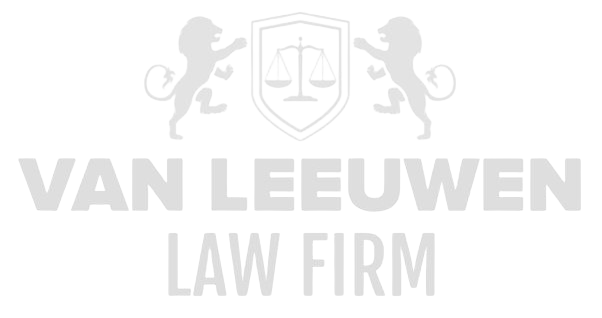The global compliance landscape is undergoing a period of structural transformation in which traditional approaches to data protection are no longer sufficient to address the complexity of digital threats and technological interdependencies. Regulatory frameworks are shifting from a purely data-protection focus toward integrated cyber-resilience models, requiring organizations to comply with increasingly stringent obligations related to risk management, technical security, governance, and transparency regarding cyber incidents. This transition is driven by the recognition that data protection represents only one component of a much broader ecosystem of digital risk in which continuity, resilience, and recovery capability are central. Legislators and supervisory authorities are intensifying their focus on systemic risks, supply-chain interdependencies, and the potentially disruptive impact of cyberattacks on economic stability and public safety.
Simultaneously, international pressure is mounting to harmonize the diverse legal frameworks governing cybersecurity, data protection, critical infrastructure, and digital services. This evolution has given rise to an increasingly complex regulatory environment in which organizations operate under multilayered obligations, ranging from accelerated incident-notification requirements to demonstrable due diligence related to third parties, mandatory technical and organizational safeguards, and heightened responsibilities for directors in cases of inadequate cybersecurity. The interaction among these elements necessitates a strategic, multidisciplinary approach to compliance in which cyber resilience is treated as an essential component of governance, risk management, and operational decision-making.
From Data Protection to Holistic Cyber-Resilience Frameworks
The shift from traditional data protection to broad cyber-resilience frameworks represents a fundamental change in how organizations are expected to identify, mitigate, and document risks. Whereas data protection has historically focused on the integrity and confidentiality of personal data, modern resilience frameworks emphasize the need to safeguard entire digital ecosystems, including business continuity, system availability, and the capability to restore operations rapidly after an incident. This approach takes into account the increasing convergence of IT and OT environments, the reliance on cloud and platform services, and the accelerating propagation of contemporary cyber threats. The resulting obligations require a redefinition of security strategies, in which resilience is no longer considered optional but instead a legally mandated requirement.
International resilience rules also require organizations to demonstrate the ability to systematically analyze and manage both internal and external digital risks. Obligations include scenario planning, stress testing, and comprehensive documentation of cybersecurity processes. Regulators expect cyber resilience to be embedded across all layers of governance, from senior leadership to operational teams. The emphasis lies on demonstrability: the ability to prove that decisions, measures, and investments align with legal requirements, best practices, and international standards. This dynamic shifts the focus from reactive measures toward a proactive, structural resilience regime.
Organizations are further expected to regard cyber resilience not solely as a technical matter but as part of broader governance obligations. This includes organizational culture, internal control mechanisms, and the capability to respond swiftly and cohesively to incidents. Requirements extend beyond the confines of the organization: resilience must be demonstrable throughout entire supply chains, rendering organizations responsible for the reliability of their complete digital ecosystems. This holistic approach underscores that resilience is a continuous process requiring ongoing evaluation, improvement, and strategic realignment.
Mandatory Incident-Reporting Regimes Under NIS2, DORA, and Sector-Specific Frameworks
Incident-notification obligations are being tightened and refined worldwide, particularly under frameworks such as NIS2, DORA, and sector-specific regimes for critical infrastructure and essential services. These frameworks introduce reporting requirements that are significantly stricter than previous legislation, with accelerated deadlines ranging from early warnings within hours to detailed incident reports within days. Such obligations compel organizations to implement robust detection, monitoring, and response processes capable of identifying and characterizing incidents promptly. Supervisory authorities are increasingly adopting stringent interpretations of what constitutes a notifiable incident, placing additional pressure on organizations to professionalize internal decision-making and escalation protocols.
These frameworks also impose detailed requirements regarding the content, quality, and completeness of submitted reports. Organizations must describe not only the nature of an incident but also the impact on service delivery, affected systems, security measures applied, and the steps taken to prevent further harm. In many jurisdictions, the quality of reporting influences supervisory oversight, meaning that insufficient or incomplete reports may trigger enforcement measures. As a result, organizations must take great care to substantiate incident reports using sound legal and technical reasoning, necessitating close collaboration among legal, technical, and operational teams.
Moreover, new reporting obligations broaden organizational responsibilities to maintain a transparent and structured relationship with supervisory authorities. Incident reporting is no longer a one-off exercise but an iterative process that often involves follow-up information requests and verification procedures. Supervisory authorities possess strengthened powers to conduct in-depth investigations into incidents and the underlying cybersecurity practices of organizations. This development reinforces the need for standardized documentation, audits, and evidence capable of demonstrating full compliance with all reporting obligations.
Integration of Third-Party Cyber Risks into Compliance Programmes
The growing reliance on third parties for critical technological and operational functions has led to intensified obligations related to third-party risk management. Regulatory frameworks require organizations to maintain visibility not only into their own security measures but also into those of suppliers, service providers, cloud operators, and other partners within their digital supply chains. This obligation encompasses extensive due diligence, contractual security requirements, and continuous monitoring of supplier performance. Emphasis is placed on demonstrability that third-party risks are treated as integral to the internal risk-management framework, with explicit attention to security, continuity, and resilience.
Modern compliance requirements compel organizations to identify and mitigate systemic supply-chain risks. This means assessing not only direct suppliers but also subcontractors and critical dependencies that may affect service delivery or data security. Organizations must deploy mechanisms to obtain real-time risk information from third parties, escalate supply-chain incidents, and coordinate adequate remediation measures. Supervisory authorities expect these processes to be firmly embedded in governance structures, including policies, internal audits, and risk reports shared with regulators.
Organizations are further expected to integrate legal and technical due diligence in a cohesive approach reflecting contractual obligations, security standards, and compliance with international legislation. Contracts must include detailed security obligations, audit rights, incident-notification requirements, and data-protection safeguards. Third-party governance is increasingly regarded as a foundational component of cyber resilience, with organizations held responsible for risks within their entire digital ecosystem, regardless of outsourcing arrangements.
Global Minimum Technical and Organizational Security Standards
The globalization of cybersecurity legislation is driving the development of harmonized minimum standards for technical and organizational security measures. These standards encompass requirements for encryption, identity and access management, patch management, network segmentation, logging and monitoring, and incident response. Regulators expect organizations not only to comply with local rules but also to integrate international best practices such as ISO 27001, NIST frameworks, and sector-specific guidelines. This requires organizations to implement a security posture that is both legally compliant and technically state-of-the-art, leaving diminishing tolerance for outdated systems, unpatched hardware, or inadequate security processes.
These standards are no longer confined to IT departments alone. Compliance programmes must ensure that every organizational unit adheres to uniform security requirements. This means embedding security measures into procurement, HR procedures, contract review, and strategic decision-making. Regulators expect organizations to demonstrate consistent implementation across all business units and to monitor, document, and remediate deviations. Compliance pressure is further heightened by expanded supervisory audit powers and increasingly severe sanctions for insufficient security.
Global harmonization of security standards additionally requires organizations to anticipate future technical requirements, such as zero-trust architectures, advanced encryption methods, and automated detection systems. Regulators are showing growing interest in predictive security models, encouraging organizations to act proactively rather than waiting for incidents before implementing measures. This dynamic creates an evolving compliance obligation in which continuous technological innovation is necessary to remain both legally and operationally compliant.
Director Accountability Models for Cyber Failures
Directors around the world are facing expanding personal and professional accountability for inadequate cybersecurity and cyber resilience. Modern legislation requires directors to oversee security strategies, budgets, risk assessments, and incident-response processes. The essence of these obligations is a shift from organizational to individual accountability, exposing directors to personal liability where structural oversight failures or negligence occur. This development is reinforced by increasingly severe sanctions, including administrative measures, civil liability, and, in certain jurisdictions, criminal consequences.
Supervisory authorities also expect directors to demonstrate the capacity to make informed decisions regarding cybersecurity investments and risk management. This requires sufficient technical and legal understanding to oversee complex security systems and compliance requirements. Documentation of decision-making, resource allocation, and oversight structures becomes a critical component of compliance. Governance committees, audit committees, and risk boards must systematically report on cybersecurity strategy and conduct periodic evaluations, with their conclusions directly relevant to supervisory assessments.
The accountability regime is further characterized by an emphasis on culture, tone at the top, and demonstrable leadership in cyber resilience. Directors are expected to ensure adequate training, policy frameworks, internal escalation paths, and reporting infrastructures that support timely and complete sharing of information concerning cyber threats. Responsibilities also extend to oversight of third-party providers, cloud services, and broader digital ecosystems. This creates a comprehensive accountability model in which directors play a proactive and substantive role in shaping and maintaining the organization’s cyber-resilience strategy, supported by clear legal obligations and documentation requirements.
Harmonisation of Data-Breach Notification Requirements
The international harmonisation of data-breach notification requirements constitutes a critical element in the evolution toward a coherent and predictable global compliance landscape. Jurisdictions are increasingly seeking uniform definitions of what qualifies as a security incident, the applicable thresholds for notification obligations, and the timelines within which incidents must be reported. This development stems from the recognition that divergent national regimes can lead to fragmentation, inconsistencies in notification decisions and heightened administrative burdens for organisations operating across borders. Harmonisation aims to mitigate these challenges by creating a more standardised reporting environment in which transparency and predictability are central. For organisations, this means that incident-response processes must become substantially more structured, with uniform internal criteria for escalation and decision-making.
Moreover, supervisory authorities play an increasingly important role in shaping harmonised practical standards. Regulators publish guidelines, expectations and interpretative frameworks, often coordinated with international counterparts. This has resulted in a convergence of views on issues such as the likelihood of risks to individuals, impact assessments and the proportionality of mitigation measures. Organisations are therefore expected not only to follow the literal wording of legislation, but also to align with harmonised supervisory expectations that effectively guide practical compliance. Consequently, notification decisions increasingly require nuanced legal-technical assessments in which risk evaluation, forensic insights and legal qualification are closely intertwined.
In addition, organisations face increasingly stringent documentation obligations as part of the broader harmonisation process. It is no longer sufficient to document only those incidents that are reported; detailed records must also be kept substantiating decisions not to notify. This creates a robust audit trail that can be requested and reviewed by supervisory authorities. These documentation duties reinforce the need for consistent internal compliance mechanisms and aligned governance structures in which legal, IT and risk teams collaborate closely. Harmonisation thus results in heightened accountability and transparency throughout incident management, contributing to a more mature and standardised global reporting culture.
Use of Threat Intelligence as a Compliance Obligation
The use of threat intelligence is evolving from an optional security measure into an explicit compliance obligation under various international regulatory frameworks. This development is driven by the growing recognition that organisations cannot ensure adequate protection without continuous insight into current threats, vulnerabilities and attack methodologies. Threat-intelligence obligations encompass both the monitoring of external threat sources and the integration of collected intelligence into internal risk assessments and security strategies. This establishes a duty to design security measures dynamically, adjusting them continually in line with evolving threat information. Regulators increasingly view the absence of effective threat-intelligence capabilities as indicative of inadequate security structures, with direct implications for oversight and enforcement.
Furthermore, the application of threat intelligence requires an advanced governance infrastructure to ensure that information is translated promptly into operational measures. Organisations must demonstrate that threat-intelligence processes are integrated into detection and response mechanisms, that indicators of compromise are incorporated into monitoring tools, and that strategic insights inform decisions on investments and security architectures. This integration spans technical implementations as well as organisational processes, including escalation procedures, incident response, periodic security assessments and policy updates. Regulators expect insight not only into the sources used but also into how analyses are validated and acted upon.
Additionally, the obligation to use threat intelligence implies that organisations must participate structurally in information-sharing mechanisms within sectoral networks, national cybersecurity authorities and international cooperation frameworks. These networks serve as critical pillars of collective resilience, enabling organisations to anticipate emerging threats that might otherwise remain undetected. Participation in such networks also brings compliance obligations, including confidentiality requirements, careful risk management of shared information and periodic assessment of the reliability of contributed intelligence. As a result, threat intelligence becomes a multidimensional obligation incorporating technological, legal and governance elements.
Increased Focus on Critical Infrastructures and Cloud Dependencies
Regulatory attention to critical infrastructures is intensifying worldwide, driven in part by the growing concern over disruptive cyberattacks capable of undermining societal and economic stability. Regulators are designating an increasing number of sectors and services as essential, imposing stricter security standards, enhanced audit obligations and expanded incident-reporting requirements. The focus is shifting from basic security controls to deep resilience requirements involving monitoring, redundancy, recovery planning and supply-chain dependencies. Organisations in these sectors are expected to ensure continuity irrespective of the nature or scale of digital threats, with a strong emphasis on demonstrable technical and organisational preparedness.
In parallel, attention to cloud dependencies is increasing, given that cloud ecosystems now constitute a structural pillar of nearly all digital operations. Regulators recognise that vulnerabilities in cloud environments pose systemic risks, as incidents at a major cloud provider can trigger cascading effects across multiple sectors. Cloud providers are therefore increasingly subject to regulatory requirements similar to those applicable to operators of critical infrastructures. Organisations relying on cloud services must also demonstrate a robust understanding of their cloud architectures, the security measures implemented by providers and the legal implications associated with data processing in those environments. Concentration risk plays a growing role in regulatory analysis: excessive dependence on a single provider is regarded as a strategic vulnerability.
The combination of critical-infrastructure obligations and cloud dependencies necessitates an integrated approach to risk management in which technical, contractual and compliance elements are tightly coordinated. Contracts with cloud providers must include audit rights, recovery guarantees, incident-notification obligations and transparency requirements regarding sub-processors and infrastructure locations. At the same time, regulators expect organisations to maintain exit strategies, migration plans and data-portability arrangements to mitigate dependency risks. These developments underscore the need for well-founded governance decisions that balance operational efficiency with legal compliance concerning digital infrastructure.
Compliance Implications of Encryption, Pseudonymisation and Data Localisation
Encryption and pseudonymisation are widely recognised as essential tools for both technical security and legal risk mitigation. Regulators increasingly view these measures as fundamental components of modern security architecture, as they significantly reduce the potential impact of data breaches. Organisations are expected to assess which categories of data must be encrypted or pseudonymised, which encryption standards are applied and how cryptographic keys are managed. These obligations apply across data storage, transmission and processing. Failure to implement appropriate encryption measures may be interpreted as a structural security deficiency, with substantial legal consequences under international compliance frameworks.
The implementation of pseudonymisation also imposes complex governance obligations, as effective pseudonymisation requires strictly segregated and tightly controlled management of supplementary information. Regulators expect organisations to evaluate systematically whether pseudonymisation meets risk-reduction requirements within their specific processing contexts. This demands detailed documentation of methodologies, access controls, algorithmic processes and operational integration. Pseudonymisation thus functions not only as a technical measure but also as a legal-organisational framework encompassing access management, process documentation and governance structures.
Data localisation has become an increasingly prominent factor in international compliance, driven by geopolitical tensions, requirements for digital sovereignty and concerns over foreign access to data. Regulators are introducing obligations to store certain categories of data within national borders or designated geographic regions. These requirements directly influence cloud strategies, vendor selection, data architectures and contractual arrangements. Organisations are expected to conduct thorough assessments of the jurisdictions in which data is stored and processed, including the risks associated with extraterritorial access under foreign legislation. This necessitates strategic data-management approaches that integrate compliance, security and geopolitical risk considerations.
Regulation of AI-Driven Security Tooling and Risks of Over-Automation
AI-driven security tooling offers unprecedented capabilities for detection, analysis and response, but it also introduces new legal and operational risks. Regulatory frameworks are evolving rapidly to account for the unique characteristics of AI systems, including algorithmic bias, self-learning capabilities, opacity and dependence on external data sources. Organisations are required to conduct explicit risk assessments for the deployment of AI in security contexts, including validation of algorithms, evaluation of training data and assessment of error margins. The integration of AI into security processes must be demonstrably supported by structured oversight, documented evaluations and clear escalation paths to human decision-makers.
Regulators also caution against the risks of over-automation, where excessive reliance on autonomous security systems may lead to missed alerts, improper escalations or inadequate responses to complex incidents requiring human judgment. Regulatory frameworks increasingly emphasise human-in-the-loop models in which human expertise retains final responsibility for critical security decisions. This requires detailed documentation of role allocation, monitoring mechanisms, override capabilities and evaluation procedures for AI-based decisions.
Furthermore, organisations face obligations to ensure transparency and explainability of AI-driven security systems, particularly where such systems influence decisions with legal consequences. Supervisory authorities require insight into the logic behind algorithmic outputs, the reliability of detection mechanisms and the governance processes overseeing the development, implementation and updating of AI systems. This results in a multidimensional compliance obligation in which technology, legal assessment, governance and ethics are tightly interwoven.















